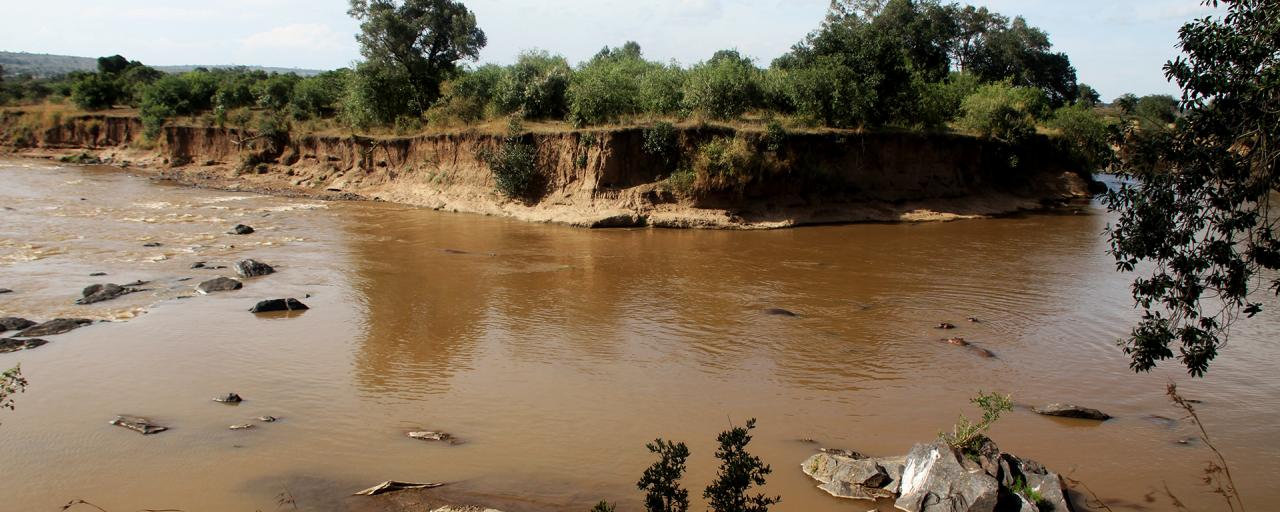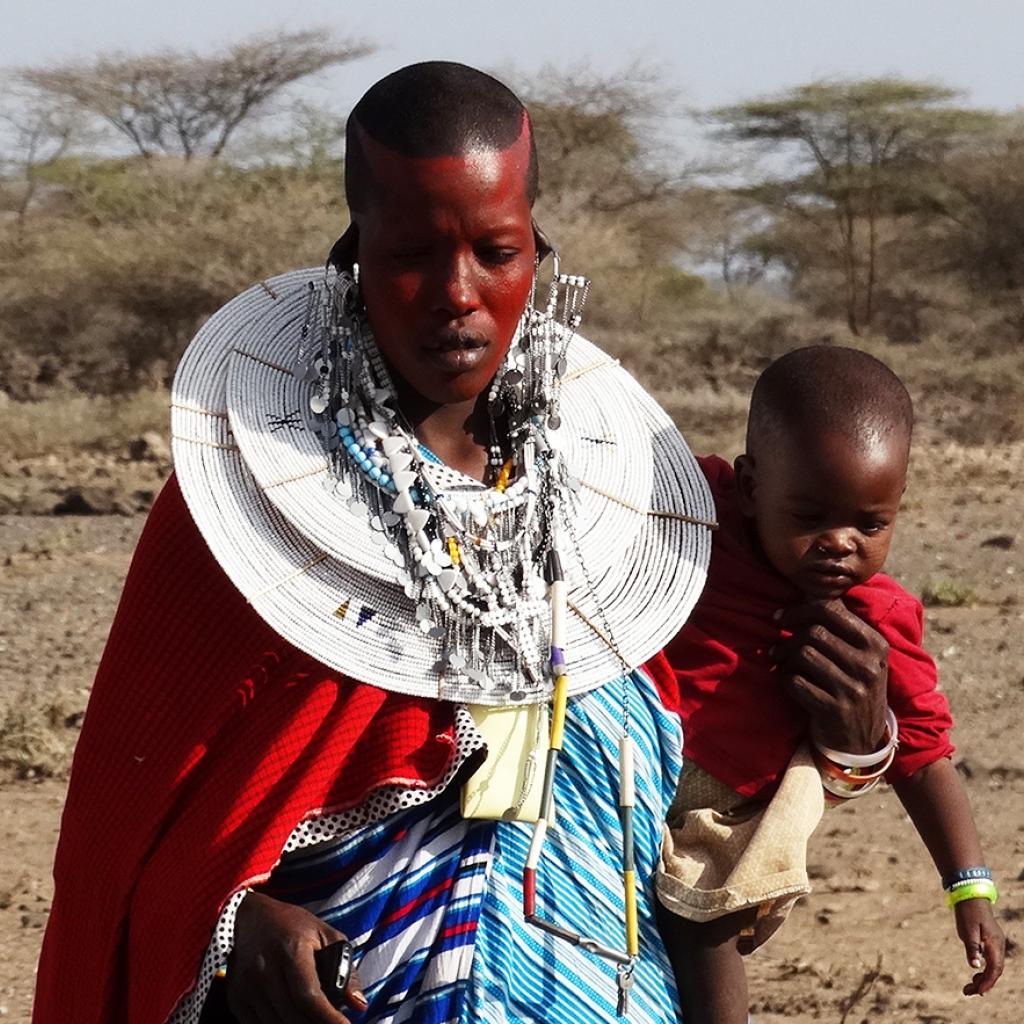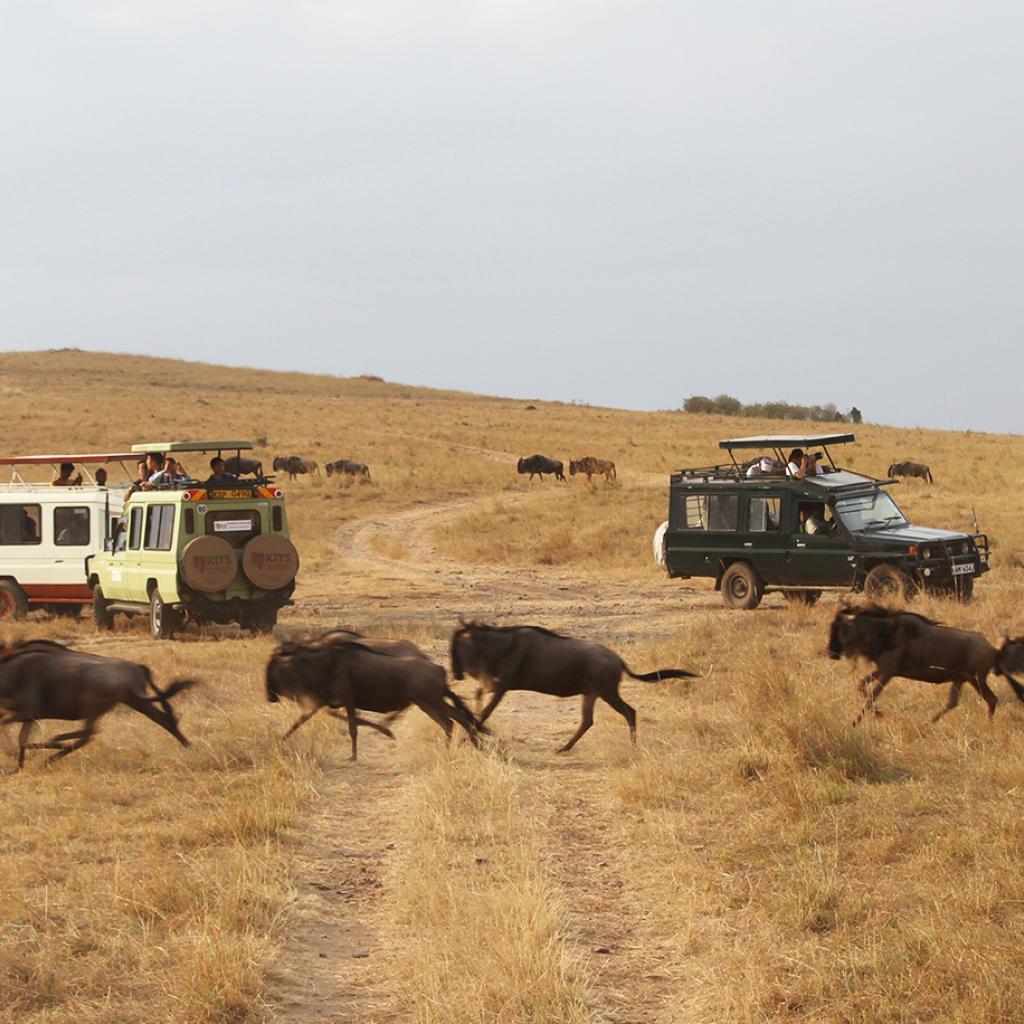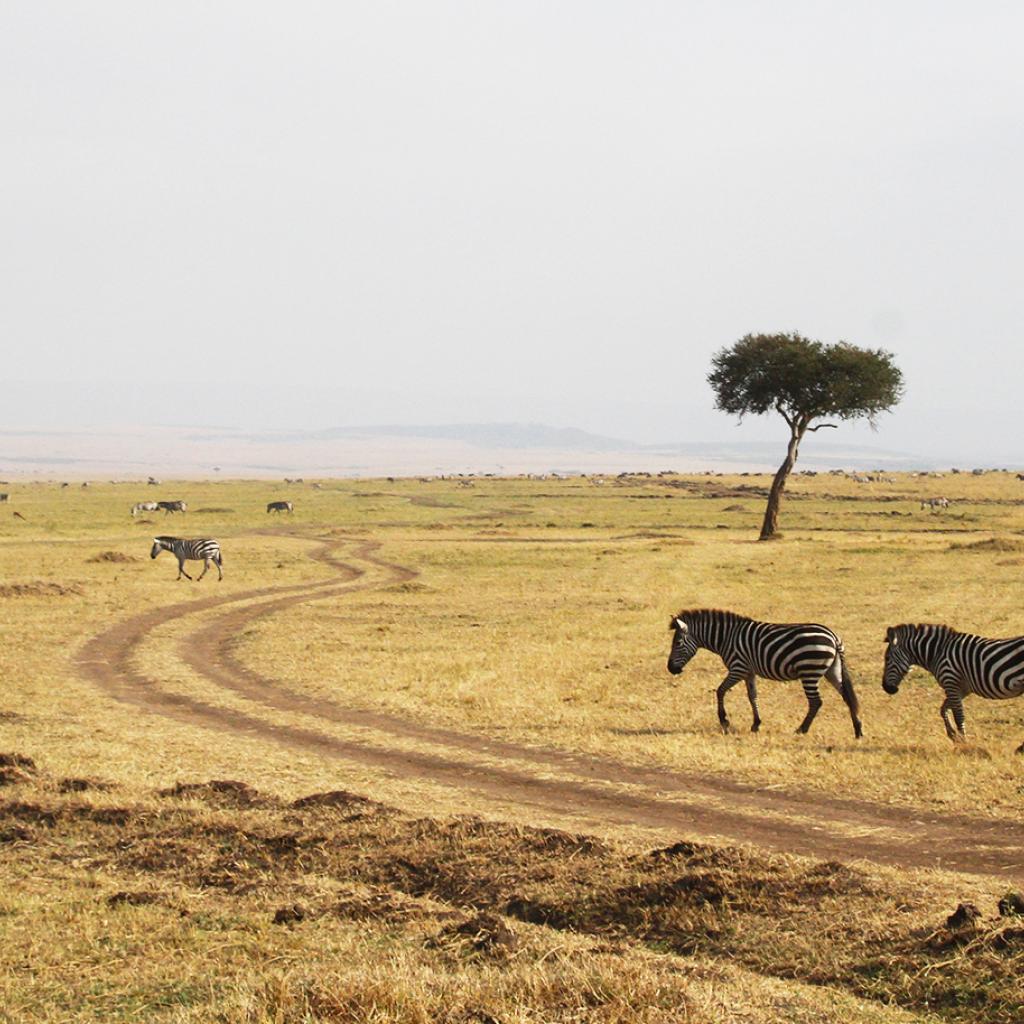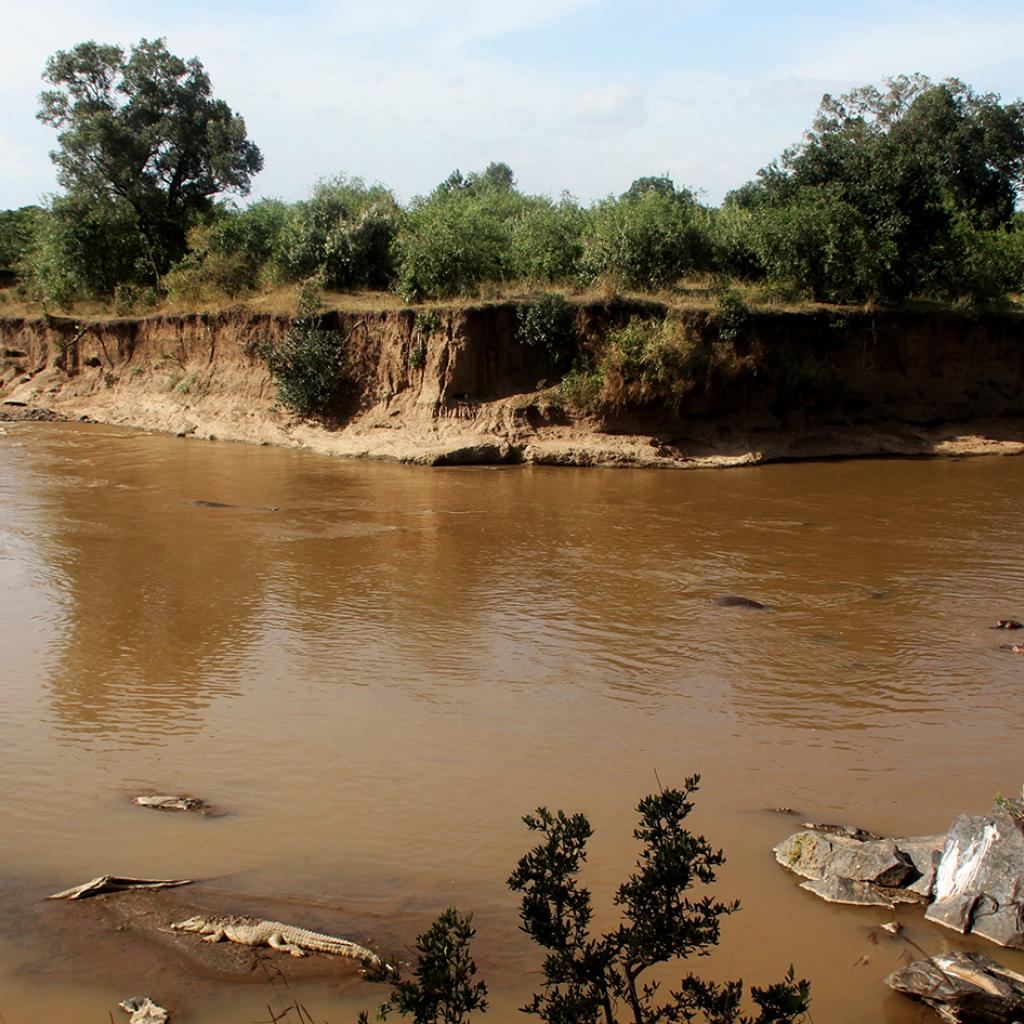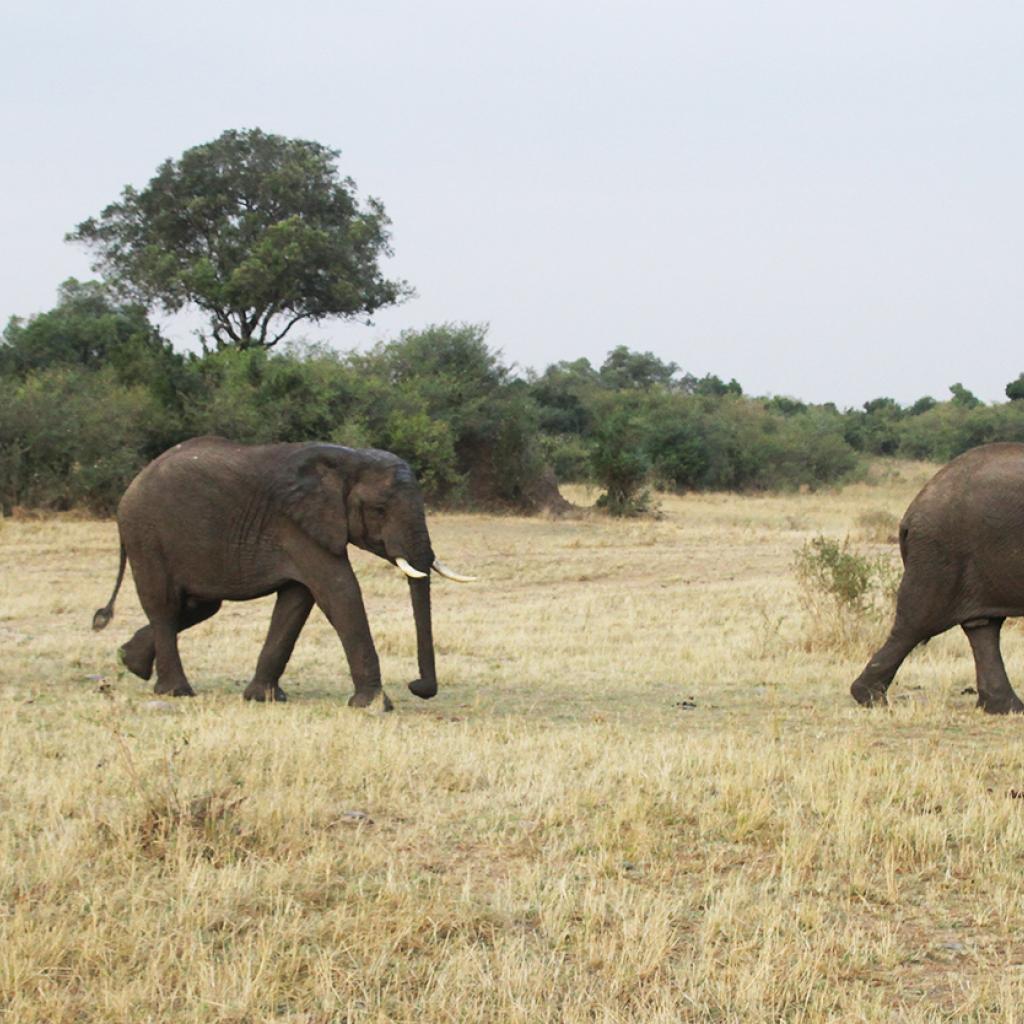The Mara River Basin covers and area of 13,325 km2, 65% of it lies in Kenya and the remaining 35% in Tanzania.
The Mara River originates in the Mau Forest in Kenya and flows into Lake Victoria in Tanzania and, along the 400-km way numerous tributaries flow into it, including the rivers Talek and Sand, that, like the Mara, flow within the Great Masai Mara Ecosystem.
A series of threats caused by humans are currently endangering the Mara River and the land inside its basin.
Increased human settlements have taken away land from nature; pastures and woods have given way to buildings and man-made constructions that require water that, inevitably, is extracted from the river, and hence reducing the amount of water for animals and nature, thus creating a problem especially during the dry season and drought times.
Low water levels is due to climate change on a global scale and as a result of over-exploitation of environmental resources and excessive pollution; deforestation afflicting the African continent and water extraction that is done upstream the river also have a great impact.
There is also an increase in water pollution as a result of the effluents from the many lodges and tented camps that are drained directly into the river without being purified.
All this is to the detriment of animals whose survival depends on the waters of this immense river.
The TransBoundary Water for BioDiversity and Human Health in the Mara River Basin manage and raise awareness on these issues, in the research of eco-sustainable solutions to the benefits of both wildlife and humans.
The main challenges of the Great Masai Mara ecosystem to survive
- Demographic growth
- Excessive and uncontrolled tourism development
- Increase in off-road driving in the reserves
- Exploitation of the Mara River Basin
- Poaching


